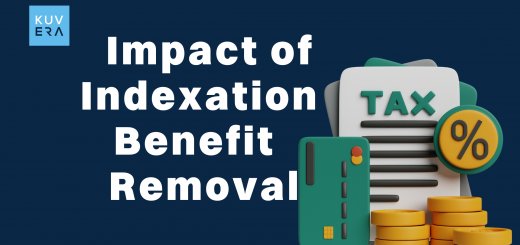What Are Index Funds?
Index funds are a type of mutual funds that aim to replicate the performance of a specific stock market index, such as the Nifty 50 or the BSE Sensex. These funds pool money from investors to buy a diversified portfolio of stocks that mirror the composition of the index.
They offer investors a convenient way to gain exposure to a broad segment of the stock without the need for active management and associated costs (total expense ratio). Index funds follow a passive management approach, making them ideal for investors seeking long-term growth potential with lower risk.
Types of Index Funds
Broad Market Indices
As the name suggests, broad market indices in India provide a broad view of the stock market’s overall performance. They track a diverse variety of companies from various sectors. They serve as indicators of the economy’s health and growth potential.
Whether it’s the Nifty 50 or the BSE Sensex, these indices offer investors insights into India’s economic health and growth prospects. By investing in these indices, you can spread your risk across different industries, diversifying their portfolios effectively. Some of the popular broad market indices in India are:
- Nifty 50 Index: A diversified 50 stock index accounting for 13 sectors of the economy
- Nifty Next 50 Index: Includes 50 companies from Nifty 100 after excluding the Nifty 50 companies
- Nifty 100 Index: Top 100 companies based on full market capitalisation from Nifty 500
- Nifty 200 Index: Mirrors the behavior and performance of large and mid market capitalization companies
- Nifty Total Market Index: Tracks the performance of 750 stocks covering large, mid, small and microcap segments via a single index
- Nifty 500 Index: Represents the top 500 companies based on full market capitalisation
Strategy Indices
Strategy indices have gained popularity because unlike other market indices, strategy indices apply specific investment strategies to their composition. These strategies may involve factors such as dividend yield, low volatility, or momentum investing.
They focus on the business strategies rather than the sector or size of the organization.
For example, Nifty Multi-Factor Indices are designed to mirror a group of stocks chosen using a mix of factors like Quality, Value, Alpha, and Low Volatility.
Some popular strategy indices in India are:
- Nifty100 Equal Weight Index: This comprises of same constituents as Nifty 100 Index
- Nifty100 Low Volatility 30 Index: Tracks the performance of 30 stocks in Nifty 100 with the lowest volatility in last one year
- Nifty 50 Arbitrage Index: Measures the performance of arbitrage strategies involving buying equities and selling equivalent equity futures in the equity market.
- Nifty 50 Futures PR: Tracks the performance of total returns from Nifty 50 Futures contract and investment in risk free instrument.
Thematic Indices
Thematic indices are designed to capture specialized segments of the market or focus on specific investment themes.
For instance, thematic indices may represent one market category like infrastructure, clean energy, pharma or biotech stocks.
By investing in thematic indices, individuals can gain exposure to these targeted sectors, aligning their investments with their interests or convictions. These indices offer a unique way to diversify portfolios and capitalize on emerging trends within the market.
Some common thematic indices in India are:
- Nifty Commodities Index: Tracks the performance of a varied selection of companies within the commodities segment, encompassing sectors like Oil, Petroleum Products, Cement, Power, Chemical, Sugar, Metals, and Mining, among others.
- Nifty Core Housing Index: Tracks the performance of stocks that represent the core housing theme.
- Nifty CPSE Index: The index aids the Indian government’s stake disinvestment initiative. It utilizes the ETF route, tracking the index’s performance.
- Nifty Energy Index: The Index mirrors the performance of various companies in sectors like Petroleum, Gas, and Power, within the commodities segment.
- Nifty Housing Index: Tracks the performance of the top 50 stocks from eligible basic industries, representing the housing theme, with weights based on their free-float market capitalization.
Sectoral Indices
As the name suggests, sectoral indices focus on a single sector of the economy. They focus on specific sectors within the stock market, such as banking, technology, or healthcare.
By investing in sectoral indices, you can target your exposure to specific sectors. This allows for a more focused investment approach, enabling investors to capitalize on opportunities within chosen sectors while diversifying their overall portfolio.
Sectoral indices provide a convenient way for investors to gain access to particular industries without having to select individual stocks.
For example, during Covid the pharmaceutical industry and healthcare industry stocks skyrocketed, investors who invested in sectoral indices of these sectors outperformed the broad markets.
Some popular sectoral indices in India are:
- Nifty Auto Index: Mirrors the Indian automobiles sector’s performance
- Nifty Bank Index: Consists of highly liquid and large-cap Indian banking stocks, serving as a benchmark for investors and market intermediaries to gauge the performance of Indian banks in the capital market.
- Nifty Financial Services Index: Mirrors the performance of the Indian financial market, encompassing banks, financial institutions, housing finance, insurance companies, and other financial services firms.
- Nifty Financial Services 25/50 Index: The index shares constituents with the Nifty Financial Services Index. It sets a cap of 25% for the weight of any single stock and 50% for the aggregate weight of all stocks with individual weights exceeding 5%.
- Nifty Financial Services Ex-Bank index:The index has the same stocks as the Nifty Financial Services Index. It limits each stock’s weight to a maximum of 25% and ensures that stocks with individual weights over 5% don’t exceed a combined weight of 50%.
Fixed Income Indices
Fixed income indices track the performance of fixed-income securities such as govt bonds. These indices are designed to reflect the movement of interest rates of the fixed-income market, such as government bonds, corporate bonds, or municipal bonds.
Investing in fixed income indices provides investors with exposure to a diversified portfolio of fixed income assets.These indices offer stability and predictable returns, as they typically have lower volatility compared to equity indices.
Additionally, fixed income indices are also used as benchmarks for evaluating the performance of the overall market trends in the fixed-income market of India.
Some popular fixed income indices in India are:
- G-sec Indices: Tracks Gov of India bonds in 6 duration buckets, with a maximum of 3 liquid securities eligible in each bucket.
- SDL Indices: Index is made from the prices of the top 5 liquid Government of India bonds, each with maturities between 8 to 13 years and outstanding issuances over Rs. 5000 crores.
Commodity Indices
Commodity Indices are designed to reflect the behavior and the performance of a basket of commodities or commodity futures contracts.
These include various commodities such as energy, metals, agriculture, and livestock, allowing them to participate in the price movements of these physical assets without directly owning them.
Nifty Commodities is India’s most popular commodity index.
Why should you invest in these Index funds?
By investing in index funds based on these indices you can not only diversify your portfolio but also get many added benefits such as:
Lower Expense Ratio: The expense ratios of index funds are lower than those of actively managed funds. A typical index fund’s expense ratio is between 0.20% and 0.50%, while an actively managed fund’s expense ratio is higher. This means that your returns won’t be eaten away by the management expenses.
No Human Error: In an Index Fund, the fund management adheres to the benchmark index, this eliminates the need for any human discretion in investment. Investment managers even though they are experts can still make errors in judgments. Index, on the other hand, does not have human bias, follows an automated methodology, and does not require regular surveillance as well.
Passive Management: Unlike actively managed funds which require a dynamic strategy, constant market research and alterations, passive funds make investing simpler by just following the benchmark indices.
Diversification: Index funds provide diversified exposure to all of the top firms that comprise the index. Diversification enables investors to lessen the risk associated with remaining invested in a single stock or industry, such as auto, pharma, etc. Based on the index funds you choose you can diversify your portfolio significantly.
How to invest in Index funds in India?
To invest in Index Funds on Kuvera:
Step 1: Download the Kuvera app
Step 2: Complete you KYC
Step 3: Go to “Invest” and select “Mutual Funds”
Step 4: Tap on “Start a SIP” and select Index Funds, or Go to Low cost Index Funds
Step 5: Choose the index fund you want to invest in, select Monthly SIP or Lumpsum
Step 6: Enter amount / SIP date (if applicable) and complete your transaction.
Want to know more about index funds? Checkout our commonly asked question about index funds.
Interested in how we think about the markets?
Read more: Zen And The Art Of Investing
Watch here: Index funds explained
Start investing through a platform that brings goal planning and investing to your fingertips. Visit kuvera.in to discover Direct Plans and Fixed Deposits and start investing today.











